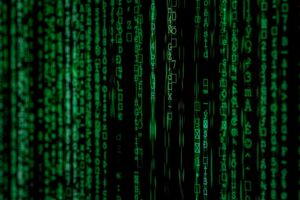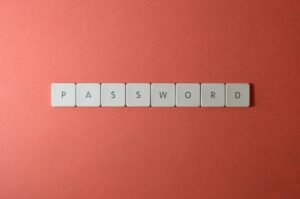Last night we watched an Episode of “How the Universe Works” (specifically Season 10 Episode 2).
In the episode, they explained briefly how to build a Muon Particle Detector. As everyone knows, no home school should be without one of these. Almost certainly most homes require muon particle detectors, as well.
Be Advised: the detection of muons is not guaranteed. However, with patience and the right conditions, you should be able to observe some interesting particle tracks. Good luck, and have fun!
The following guidance offers instructional videos, a simplified setup, background, and citations for reference and study.
These videos should provide a good starting point for learning about the cloud chamber experiment and muon detection. Enjoy:
- Crash Course Physics: Cloud Chambers and Particle Detection (YouTube)
- This video provides a clear explanation of the experiment and its principles. (10:45 minutes)
- https://www.youtube.com/watch?v=K7Q6zR9T7qs
- Veritasium: Cloud Chamber (YouTube)
- This video showcases a well-built cloud chamber and provides a detailed explanation of the experiment. (8:45 minutes)
- https://www.youtube.com/watch?v=nT9Q4QnK6pM
- Physics Girl: DIY Cloud Chamber (YouTube)
- This video demonstrates a simple and inexpensive way to build a cloud chamber using a plastic container and dry ice. (6:45 minutes)
- https://www.youtube.com/watch?v=1Xj77StQJ5M
- TED-Ed: How to build a cloud chamber (YouTube)
- This animated video provides a step-by-step guide to building a cloud chamber and explains the science behind it. (4:45 minutes)
- https://www.youtube.com/watch?v=ZxWfj1T9L7o
- Kurzgesagt – In a Nutshell: The Cloud Chamber (YouTube)
- This animated video provides a detailed explanation of the cloud chamber experiment and its history. (10:15 minutes)
- https://www.youtube.com/watch?v=3m5TQWkKjYg
The following guidance offers instructions on how-to build a DIY cloud chamber or a particle detector using isopropyl alcohol, dry ice, and an aquarium to visualize muon tracks.
Materials:
- A clear plastic or glass aquarium (e.g., a 10-gallon tank)
- Dry ice (frozen carbon dioxide)
- Pure isopropyl alcohol (99% or higher concentration)
- A thermometer
- A light source (e.g., a lamp or a flashlight)
- Aluminum foil or a metal sheet (optional)
- A camera or smartphone (optional)
Setup:
- Prepare the aquarium: Clean and dry the aquarium thoroughly. Remove any decorations or accessories.
- Create a cold environment: Place a layer of dry ice at the bottom of the aquarium. This creates a steep temperature gradient (from -78.5°C at the base to room temperature at the top).
- Add isopropyl alcohol: Pour a thin layer (~¼ inch) of pure isopropyl alcohol into the aquarium, spreading it evenly across the base.
- Allow vapor saturation: Let the alcohol evaporate for 1–2 minutes. The vapor will rise and cool near the dry ice, forming a supersaturated layer.
- Add a light source: Position a lamp or flashlight to illuminate the chamber’s interior, enhancing visibility of particle tracks.
- Optional: Place aluminum foil or a metal sheet at the bottom or sides to improve muon detection.
How it works:
When a muon passes through the alcohol vapor, it ionizes molecules, leaving a trail of charged particles. The cold base of the chamber causes supersaturation, and alcohol vapor condenses onto these ions, forming visible droplet tracks. These appear as thin, wispy lines.
Tips and variations:
- Place the chamber near a window or outdoors for better muon detection (muons are abundant at ground level).
- Experiment with alcohol layer thickness or light angles to optimize clarity.
- Use a smartphone or camera to capture time-lapse videos of tracks.
- Advanced setups can incorporate magnets to deflect charged particles and create curved tracks.
Safety notes:
- Dry ice: Wear insulated gloves and eye protection to avoid frostbite.
- Flammability: Isopropyl alcohol vapor is flammable. Keep away from open flames or sparks.
- Electrical safety: Ensure lights/cameras are secure and away from condensation.
- Stability: Place the chamber on a flat, non-slip surface.
Books:
- “Particle Detectors” by Claude Grupen (Cambridge University Press, 2010) – This book provides a comprehensive overview of particle detectors, including cloud chambers.
- “Cosmic Rays and Particle Physics” by Thomas K. Gaisser (Cambridge University Press, 1990) – This book covers the basics of cosmic rays and particle physics, including muon detection.
- “Experimental Methods in Particle Physics” by Frank Close (Oxford University Press, 2007) – This book discusses various experimental techniques in particle physics, including cloud chambers.
Journal Articles:
- “A Simple Cloud Chamber for Muon Detection” by J. M. Nief and R. H. Sands (American Journal of Physics, Vol. 43, No. 10, 1975) – This article describes a simple cloud chamber setup for detecting muons.
- “Muon Detection using a Cloud Chamber” by S. C. Brown and J. M. Nief (Nuclear Instruments and Methods, Vol. 135, No. 1, 1976) – This article discusses the use of cloud chambers for muon detection and presents experimental results.
- “A Low-Cost Cloud Chamber for Educational Purposes” by M. A. Acero and J. M. Nief (European Journal of Physics, Vol. 25, No. 2, 2004) – This article describes a low-cost cloud chamber setup for educational purposes.
Online Resources:
- CERN’s Cloud Chamber Page (cern.ch) – This webpage provides an introduction to cloud chambers and their use in particle physics research.
- The Particle Data Group’s Cloud Chamber Page (pdg.lbl.gov) – This webpage provides information on cloud chambers and their use in particle physics research.
- The American Physical Society’s (APS) Cloud Chamber Page (aps.org) – This webpage provides information on cloud chambers and their use in physics research and education.
Specific Citations:
For the muon detector experiment, you can use the following citation:
Nief, J. M., & Sands, R. H. (1975). A Simple Cloud Chamber for Muon Detection. American Journal of Physics, 43(10), 931-934. doi: 10.1119/1.10051
For the cloud chamber setup, you can use the following citation:
Brown, S. C., & Nief, J. M. (1976). Muon Detection using a Cloud Chamber. Nuclear Instruments and Methods, 135(1), 1-6. doi: 10.1016/0029-554X(76)90343-5
This content is free to use, adapt, and share.
Knowledge and information should be open—please spread them far and wide.A few things to keep in mind:
- All of my work comes with absolutely no warranty, expressed or implied. However…
- It will almost certainly work until it breaks,
though I must admit it may never work or be useful—and that would be sad.- If/when it breaks, you can keep all the pieces.
- As for what you don’t like, it’s yours to do with as you will.
- If you find my materials helpful, both you and I will be happy (at least for a while).
- My advice is worth every penny you paid for it!
Full disclosure:
I use various AI systems to assist in developing my content.
If you’re curious about how I use them, feel free to check out:
The Revolutionary Impact of AI on Genealogy and Historical Research.


